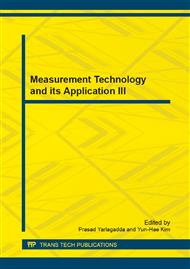[1]
R.M. Drinkwater, R. Haagmans , D. Muzi , et al. The GOCE gravity mission: ESA'a first core Earth explorer [J]. In: Beutler GB, Drinkwater MR, Rummer R, Steiger Rvon(eds) Space science series of the ISSI, Earth gravity field from space-from sensors to Earth sciences, vol. 18. Kluwer, Dordrecht pp.419-432. (2007).
DOI: 10.1007/978-94-017-1333-7_36
Google Scholar
[2]
R. Barzaghi, N. Tselfes, I. N. Tziavos, et al. Geoid and high resolution sea surface topography modelling in the mediterranean from gravimetry, altimetry and GOCE data: evalution by simulation[J]. Journal of Geodesy., 2009, 83: 751-772.
DOI: 10.1007/s00190-008-0292-z
Google Scholar
[3]
M. Eshagh, .L.E. Sjoberg. Atmospheric effects on satellite gravity gradiometry data[J]. Journal of Geodynamics, 2009, 47: 9-19.
DOI: 10.1016/j.jog.2008.06.001
Google Scholar
[4]
M. Eshagh. The effect of spatial truncation error on integral inversion of satellite gravity gradiometry data[J]. Advances in Space Research, 2011, 47: 1238-1247.
DOI: 10.1016/j.asr.2010.11.035
Google Scholar
[5]
X.Y. Xu, Z.T. W, X.C. Z, et al. Error Analysis and Simulation Research on Satellite Gravity Gradiometry data[J]. Journal of Geodesy and Geodynamics, 2010, 30(2): 71-752010, 30(2): 71-75.
Google Scholar
[6]
Z.C. Luo, B. Zhong, J.S. Ning. Numerical simulation and analyze on the orbital disturbation of GOCE satellite[J]. Geomatics and Information Science of Wuhan University, 2009, 34(7): 757-760 , 2009, 34(7): 757-760.
Google Scholar
[7]
Y.Z. Zhang, H.J. Xu, W.D. Wang, et al. Gravity anomaly from satellite gravity gradiometry data by GOCE in Japan Ms9. 0 strong earthquake region[J]. Procedia Environmental Sciences, 2011, 10: 529-534.
DOI: 10.1016/j.proenv.2011.09.086
Google Scholar
[8]
H.J. Xu, Y.Z. Zhang, H.R. Duan, et al. Gravity anomaly detected by GOCE satellite in China. Progress in Geophysics, 2012, 27(2): 0404-0408.
Google Scholar
[9]
H.R. Duan, Y.Z. Zhang, F. Liu, et al. Crustal thickness computed by using satellite gravity data in Chian and its Adjacent Regions[J]. Progress in Geophysics, 2010, 25(2): 494-499.
Google Scholar
[10]
J. Fang. Thickness of the lithosphere inversed by satellite gravity data[J]. Crustal Deformation and Earthquake, 1999, 19(1): 26-31.
Google Scholar
[11]
X. Y. Ma. The dynamics atlas of China lithosphere [M]. Beijing: SinoMaps Press, (1989).
Google Scholar


